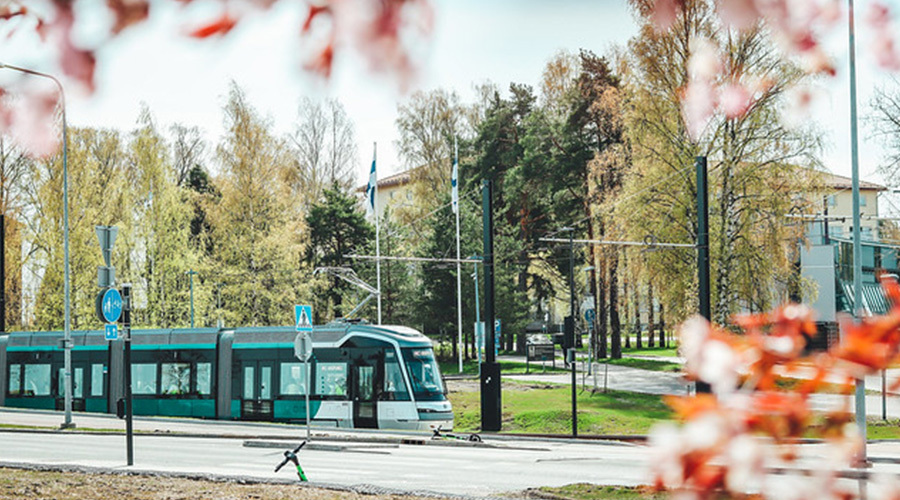At the end of October, the fast tram 15, which runs from Keilaniemi in Espoo to Itäkeskus in Helsinki, started its operations. This approximately 25-kilometre-long line replaces the previously heavily trafficked bus line 550. Other new line starting its operations in 2024, connects the current tram, metro, and train networks to each other on the route between Kalasatama and Pasila.
Green financing accelerates low emission public transport
Both tram projects have been financed with MuniFin’s green financing. This form of financing is intended for investment projects that produce clear and measurable positive effects on the climate and the environment. According to Satu Talvio, environmental expert at Metropolitan Area Transport Ltd, MuniFin was a natural financing partner, as the projects are based on reducing emissions and being environmentally friendly.
“The projects have been implemented based on political will, the aim of which is sustainable growth and dense urban structure of the city. Tram projects enable residents to move around with low emissions and reduce traffic carbon emissions. The responsibility of urban transport, on the other hand, is to build rail infrastructure with as low emissions as possible. Our strategic goal is to be carbon neutral by 2030”, says Talvio.
Both projects have been implemented with the alliance model, in which the client organisation established by the cities, the planner and the contractor merge into a single alliance organisation.
“This type of cooperation has produced many new insights and innovations. Thanks to the alliance model, the process is more transparent, and the total costs are lower than in the traditional contract model. In addition, possible risks are shared equally among all parties”, Talvio continues.
Learning opportunities and low-emission mobility
Both tram projects are significant, as they are the first major rail investments in the capital region for a long time.
“Along the way, we have learned a lot about material efficiency, circular economy, and certifications. The project named Raide-Jokeri or fast tram 15 has progressed excellently and was completed ahead of schedule. On the other hand, global crises and the resulting price increases have had a greater impact on the cost increase of the Kalasatama to Pasila project due to the timing of construction, but they have not affected the schedule”, Talvio recounts.
Karoliina Rajakallio, Chief Financial and Strategy Officer of Kaupunkiliikenne Oy, also sees the projects as development laboratories.
We are not only developing the end result of the project, but at the same time we are learning and creating guidelines for future projects, Rajakallio states.
The rail projects have many effects on the everyday life of city residents from both a mobility and urban development perspective.
“Fast trams make their impact areas more attractive and catalyse urban development projects and area renewals. They increase the demand for premises and house prices, thus improving the vitality of the areas”, Rajakallio lists.
Trams also help city residents implement green values in their daily lives.
“City residents can move from place to place with low emissions, which reduces individual carbon footprint”, Talvio continues.
Fast tram traffic has started well after the initial minor technical challenges.
“Although the large number of passengers on the opening weekend caused minor schedule delays, the situation has since levelled off. The operation and adherence to the schedule of fast tram traffic are now at a good level. Overall, the start of fast tram traffic has gone very smoothly”, Talvio says.
Green Finance
MuniFin grants green financing to projects that generate clear and measurable positive climate and environmental impacts. Green financing, that is more affordable than ordinary loans or leasing, has been granted since 2016, and today there are over 300 projects within the financing from Helsinki to Inari.




